The other day when I learned that the Tourism Society, an academic network of communities that run tourism operations, was planning an outing to Ban Sala Daeng Nuea and nearby sites of interest, my heart leapt with joy. This Mon community by the Chao Phraya River is one where the residents still cherish their cultural heritage. Located in Pathum Thani's Sam Khok district, which is only 37km or so from Pak Kret, Nonthaburi, where I live, Ban Sala Daeng Nuea and its namesake temple are among those places in adjacent provinces that I've long wanted to visit but somehow never got the chance to.

Located on the east side of the Chao Phraya, which meanders through Pathum Thani’s Sam Khok district, Wat Saladaeng Nuea is one of several age-old Mon communities lining this section of the river. The temple, where monks still chant in the Mon language, serves not only as a spiritual hub for the people living in the neighbourhood, which is named after the temple but also is a source of ethnic pride and a venue for traditional activities. Within the temple ground, there are some beautiful old buildings and a makeshift structure where wooden boats, which used to be a crucial part of the life in this riverside community, are stored. The locals plan to build a museum not just to house the boats and other antiques but to serve as a learning centre on Mon culture and community history as well. Visit the temple and you might come up with an idea on how you or your organisation can contribute.


The day trip began from Wat Saladaeng Nuea where we listened to local leaders brief us about their community and their plans to create a museum. Later they led us to old buildings on the temple ground before one of them guided us through the beautiful neighbourhood to his home so we could get a close look at a traditional wooden house and learn about some of the old items he collects that reflect the old ways of life of the people in the area. I never knew until then that to navigate a man-powered barge, you need to have different kinds of oars in the boat. Some were designed for pushing the vessel forward, others are for other purposes such as adjusting the boat's position when approaching the river bank.
Afterward, we visited a family that was making krayasat, one of the two traditional sweet snacks that the community is famous for. The other is mi krop. We got to try both, and I must say the krayasat and mi krop of Ban Sala Daeng were among the best I've had.
Later, we travelled further north to Ayutthaya's Bang Pa-in, bypassing the well-known palace that shared the same name with the district because our time was tight and the palace alone would take a whole day to visit. Our destination was Kong Khong market, which was full of visitors who came for a good lunch.
In the afternoon we went to Ko Koet Royal Folk Arts and Crafts Centre and a number of temples on the west side of the river. Still, there are many more old temples and communities along the way that we did not have enough time to drop by, not to mention riverside cafés and restaurants.
The trip was my first to Ban Sala Daeng Nuea but not my first to these parts. I know I need to go back several times more to really get a good picture of this fascinating part of the Chao Phraya River.



A relatively short drive from Bangkok, the riverside areas between Ayutthaya and Pathum Thani have many attractions that will take your breath away.

The water level in the Chao Phraya varies by season. Some years it can be remarkably higher than usual. In this picture taken a few days ago in Ban Sala Daeng Nuea near its namesake temple, you can see the river and the markings that record the water levels of major floods over the decades. The numbers are the Buddhist Era, which you have to subtract 543 to get the corresponding Christian year. The one at the top was from 2010, which was still about 0.5m lower than the great flood of the following year when many houses in the area, despite being built on tall pillars, could not escape the phenomenally high water.



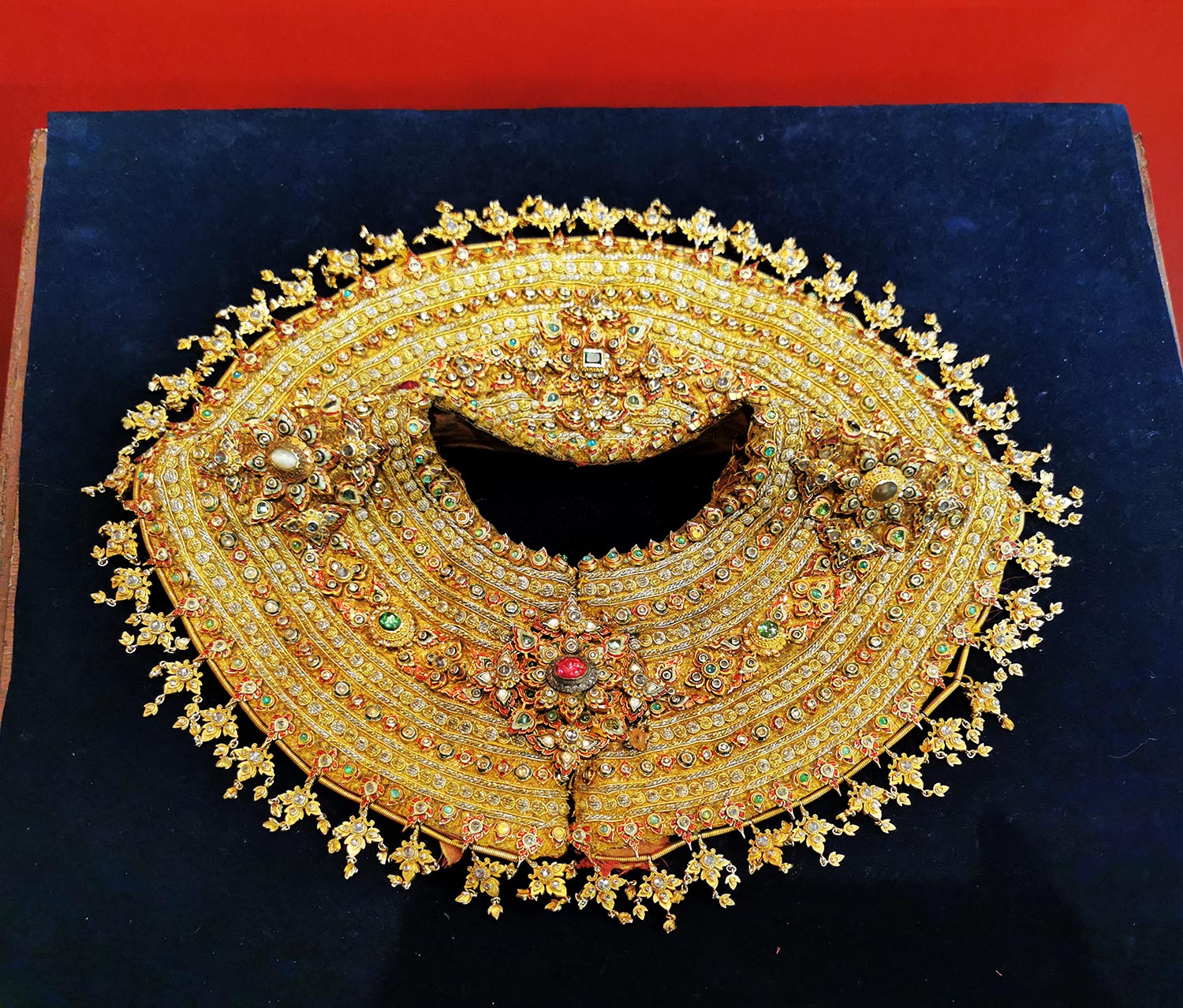

Part of the Ko Koet Royal Folk Arts and Crafts Centre in Bang Pa-in, the All About Khon exhibition hall gives visitors a better understanding of the various arts and crafts involved in the traditional masked performance, from the creation of costumes and accessories for each character that follows intricate traditional designs to the construction of massive theatrical scenery and props that are full of delicate details. All these involve craftsmen of various expertise who were trained by the Support Foundation of Her Majesty Queen Sirikit, which also organises annual khon shows that preserve the traditional performing arts and all the numerous other art forms that make it happen. Apart from major stage props, visitors will also get to see craftsmen at work. Other than the All About Khon exhibition hall, the centre also has other zones, including the Arts of the Kingdom Museum, which exhibits the grandest of masterpieces by craftsmen of the Support Foundation. The centre is open daily, except for Mondays and Tuesdays, from 10am to 3.30pm.

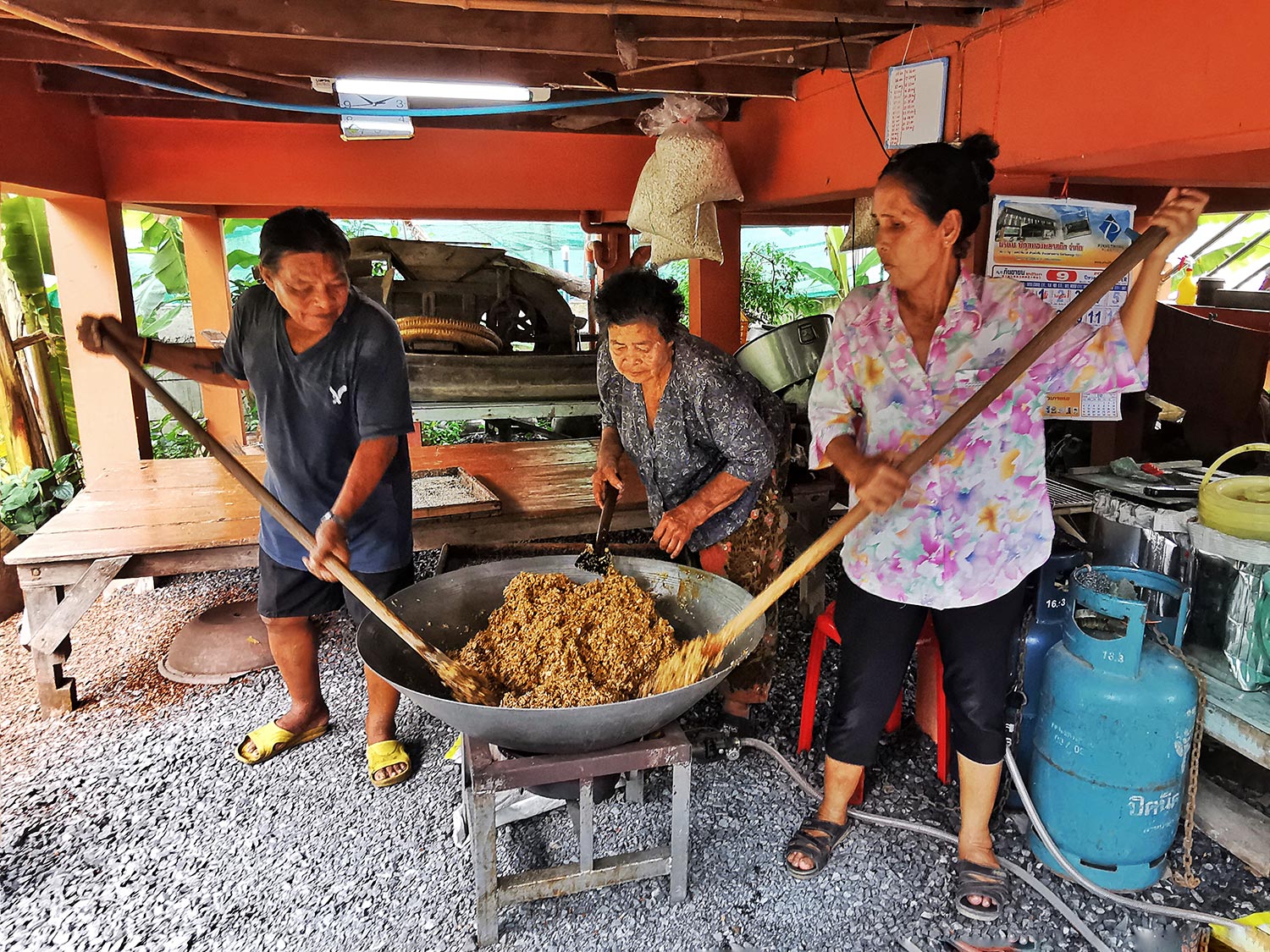

Ban Sala Daeng Nuea of Sam Khok district is one of the few Mon communities which actively preserve the culture of their ancestors who migrated to this area centuries ago. Here, several Mon words are still commonly used. The history of the neighbourhood, as well as the traditional way of life, have been systematically researched and recorded by the locals themselves. Stroll through the surprisingly tidy community and you’ll find beautiful old wooden homes and friendly people who are proud of their ethnic origin. Some families make and sell traditional snacks like krayasat (caramelised rice and other grains) and mi krop (sweetened deep-fried rice vermicelli). To find them, just politely ask anybody you run into for directions. Unless it is easy for you to return, make sure you buy a little more than you think you need. Otherwise, the delicious snacks will be all gone not long after you arrive home.


Talat Kong Khong in Bang Pa-in is a market where vendors dressed in folk costume sell various kinds of Thai food freshly made on site. This is a recommended place in this area for an inexpensive and fulfilling lunch. After the meal you can explore other parts of the market where you can find retro candies, fruits and other farm produce, wickerwork, pottery, incense sticks, brooms and several other handmade products. The market is open from Thursday to Sunday and public holidays, 9am-4pm.



Pathum Thani’s Muang district is home to several Mon temples. Most of them house old Buddha images and some also boast beautiful mural paintings. Wat Bang Luang is a good example and well worth a visit. At the temple’s eastern entrance, you will also find an arched bridge over Bang Luang canal. It was built during the reign of King Rama V.

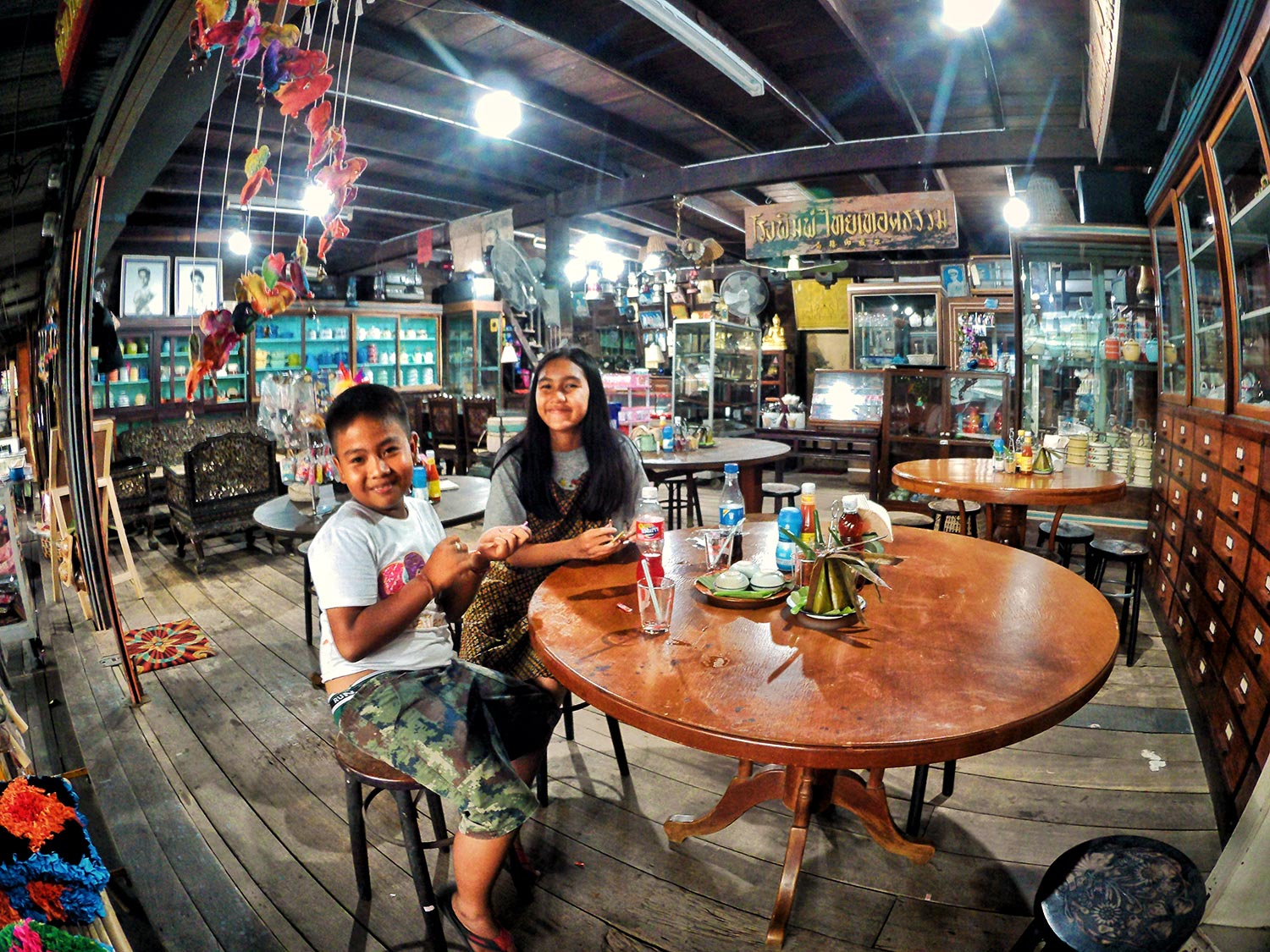

Talat Ing Nam Sam Khok is a community on the west bank of the Chao Phraya at the point where Bang Toey canal meets the river. Decades ago, this place was a bustling commercial hub in this part of Pathum Thani. It even had a movie theatre which doubled as a venue for concerts by famous singers of those days including the legendary Suraphol Sombatcharoen. Every Saturday and Sunday, from 7am to 4pm, the charming community made up of decades-old wooden shophouses turns into a market offering numerous choices of food and other goods. A stone’s throw from the weekend market is the old district office which has been renovated and converted into a local museum. In front of the building is a statue of Sunthorn Phu, a famous poet of the early Rattanakosin period who mentioned Sam Khok in one of his works.

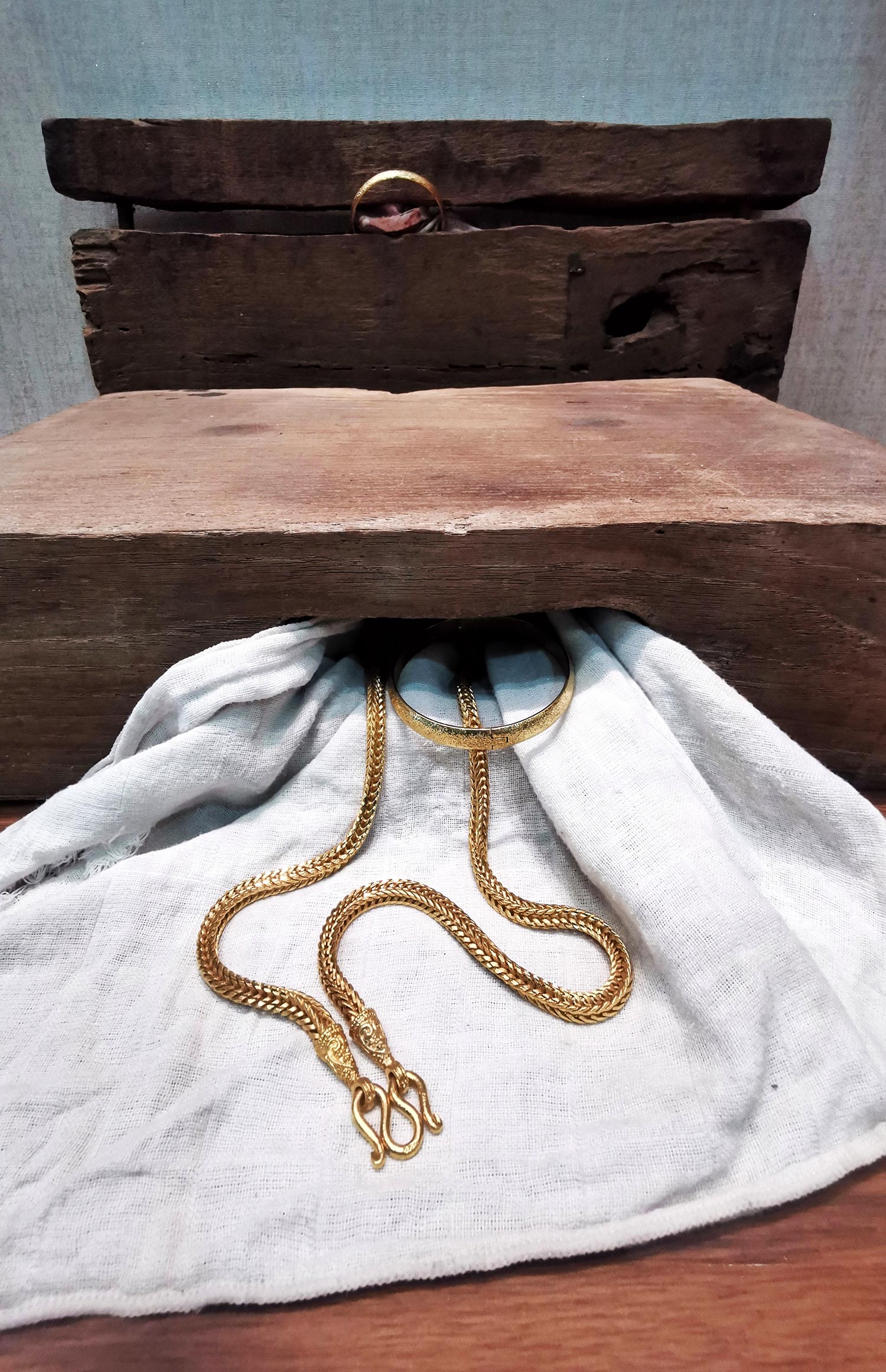

Wat Bot of Sam Khok dates back to the Ayutthaya period. However, there is no centuries-old architecture to be seen. These days, the riverside temple is best known for two giant statues, one depicting Luang Pho Sothon, a sacred Buddha image of Chachoengsao province almost 100km away, and the other of Somdet To, a highly revered monk in the early Rattanakosin period. For those who are not so religious, the temple also has a market where tons of delicious items can be found. Many visitors like to go to the riverfront to feed the fish. There is also a small museum. Among the displayed objects are wood blocks, each with a dug-out hole which served as secret storage space for gold ornaments.

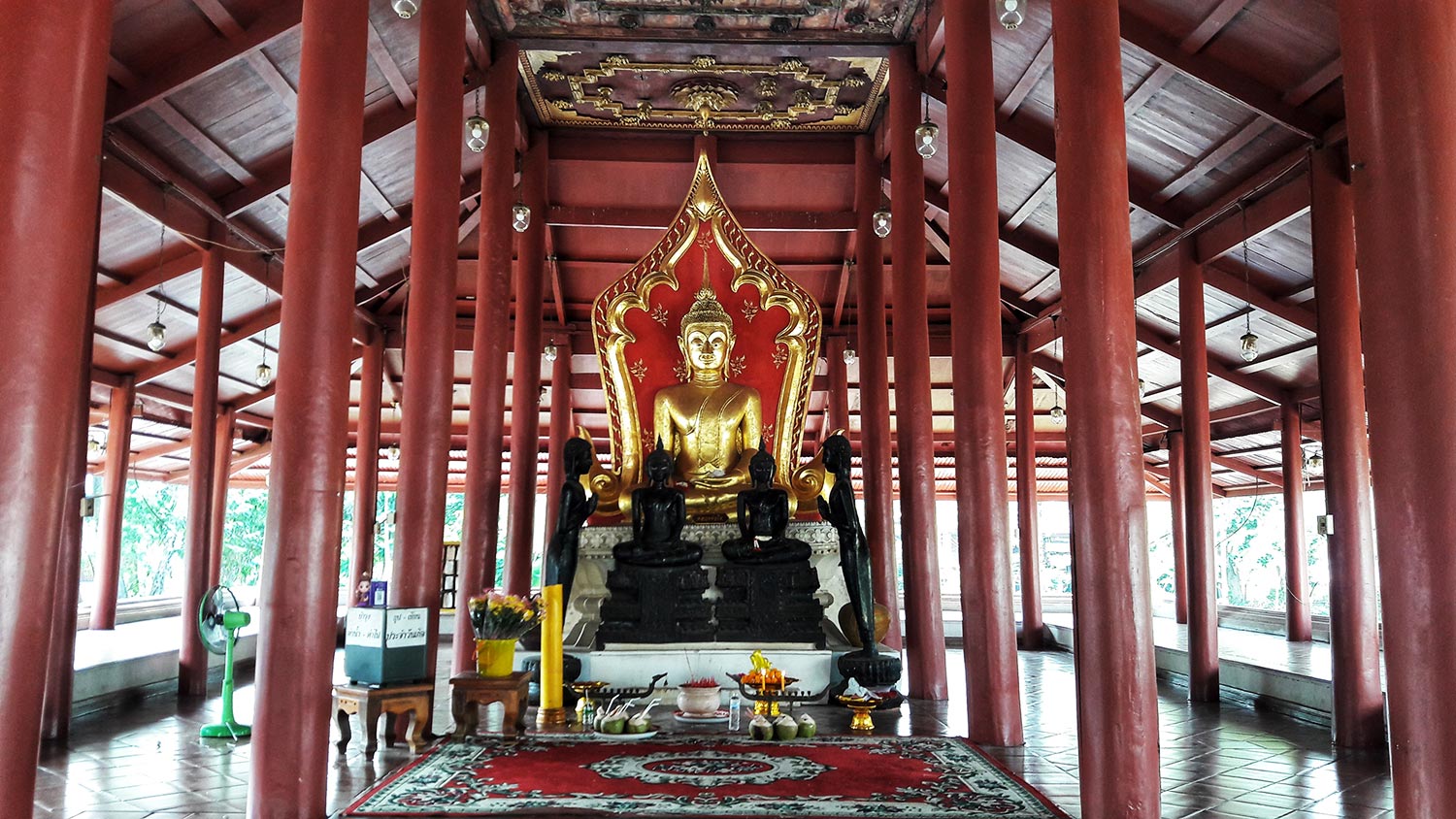
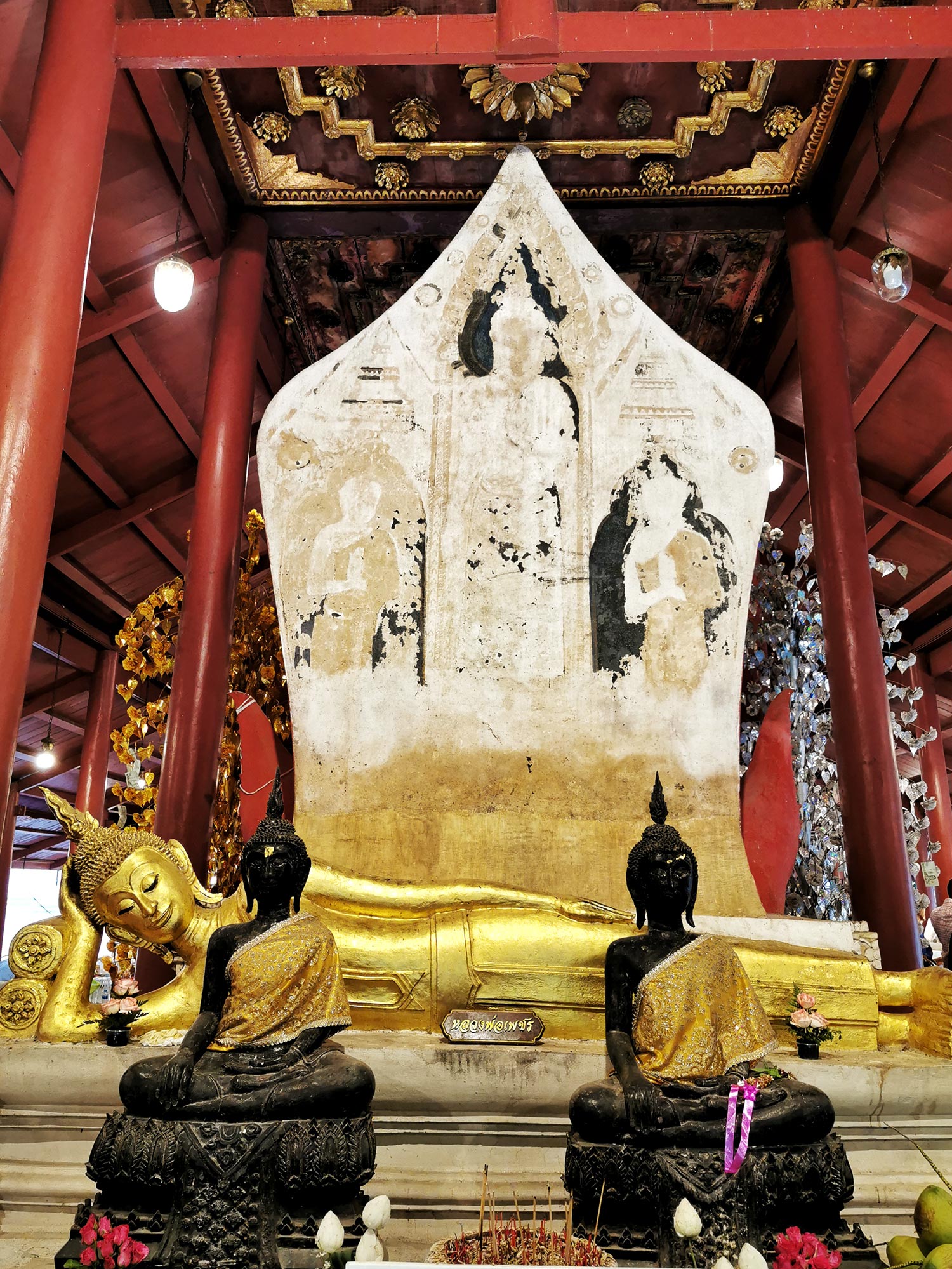
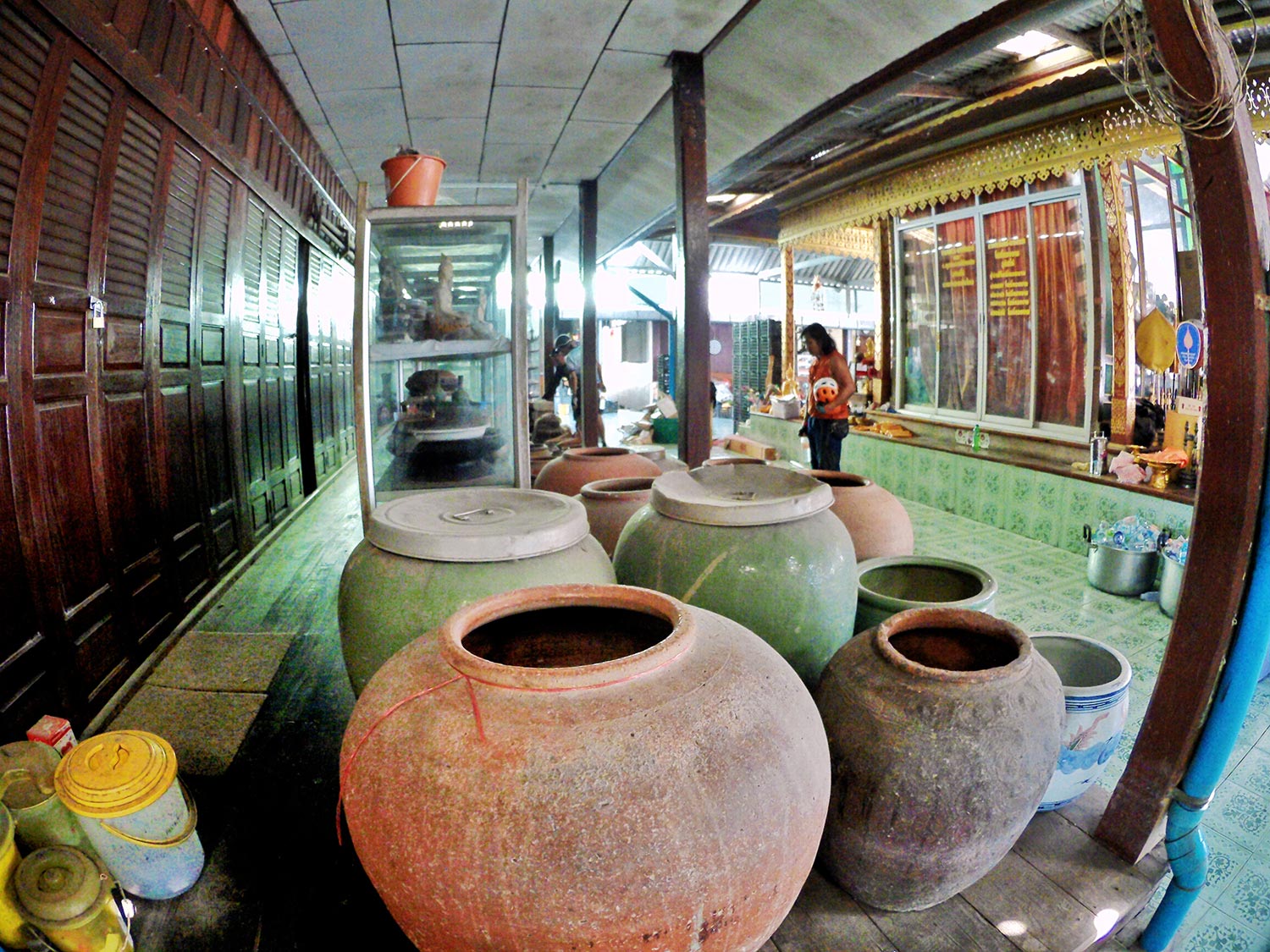

About 5.5km south of Wat Bot is Wat Sing, another temple from the Ayutthaya period. Here, you’ll find old architecture from those times where centuriesold Buddha images are housed. On my previous visit a few years back, I was invited into the monk’s residential building to see a collection of jars and other earthenware that Sam Khok used to be famous for. There were also several pieces of antiques, one of which is a Chinese-style wooden bed that King Rama II gave to Phya Krai, a Mon monk who was then the temple’s abbot. Phya Krai’s cremated remains are enshrined in a monument shaped like an urn, which is located in front of the prayer hall. Just across the road from Wat Sing lies one of Sam Khok’s several ancient kiln sites.
TRAVEL INFO
- The places featured in this article are just examples of the many sites of interest scattered along both sides of the Chao Phraya River in Ayutthaya's Bang Pa-in and Bang Sai districts and Pathum Thani's Sam Khok and Muang districts further downstream. You can design an itinerary that suits you best.
- Unless you choose to visit just a single place, it's best to have a private vehicle. In case you don't own one, hire one. A rental car, a taxi (many drivers are happy to do day trip if you let them know in advance) or a van with a driver makes it easy to explore these parts. Local taxis in Pathum Thani and Ayutthaya can be another option. Their contact numbers are easy to find on the internet.
- For more information about Wat Saladaeng Nuea and its namesake Mon community, visit shorturl.at/lmEQ3.
- Occasionally, the Tourism Society holds day trips in Bangkok and nearby provinces for culture lovers. Check out their Facebook page thaitourismsociety to learn more about the group's activities.

